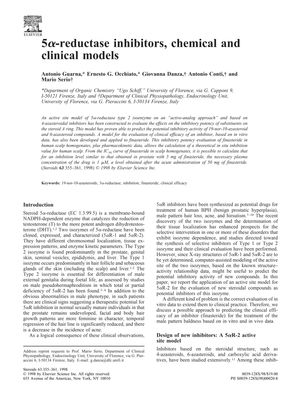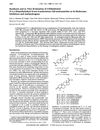5α-Reductase Inhibitors: Chemical and Clinical Models
May 1998
in “
Steroids
”

TLDR Researchers developed a model to predict how well certain compounds can block an enzyme related to hair loss and prostate issues, suggesting a 50 mg dose of finasteride might be effective based on lab and body data.
In 1998, researchers developed an active site model for the 5α-reductase type 2 isoenzyme using 4-azasteroidal inhibitors to predict the inhibitory activity of compounds on the steroid A ring. They evaluated the potential inhibitory activity of 19-nor-10-azasteroid and 6-azasteroid compounds and developed a clinical efficacy model for inhibitors, particularly finasteride. This model, based on in vitro data from human scalp homogenates and pharmacokinetic data, suggested that a plasma concentration of 1 µM finasteride, achieved with a 50 mg dose, would be necessary for effective scalp inhibition. The model was not highly accurate but could indicate potential activity trends within the same class of inhibitors. The document also highlighted the importance of certain structural features, such as the C-17 position substituents and a nitrogen atom at position 10, for potent enzyme inhibition. Finasteride, the only extensively used 5α-reductase inhibitor at the time, had limitations in treating benign prostatic hyperplasia and hirsutism. The study suggested combining in vitro activity data with pharmacokinetic data to calculate effective treatment doses, which could be validated by measuring dihydrotestosterone reduction in patients.


![Synthesis of 5,6,6-[2H3]Finasteride and Quantitative Determination of Finasteride in Human Plasma at Picogram Level by an Isotope-Dilution Mass Spectrometric Method](/images/research/0026b639-99a8-455a-a986-c39aa65abfa9/small/2087.jpg)


